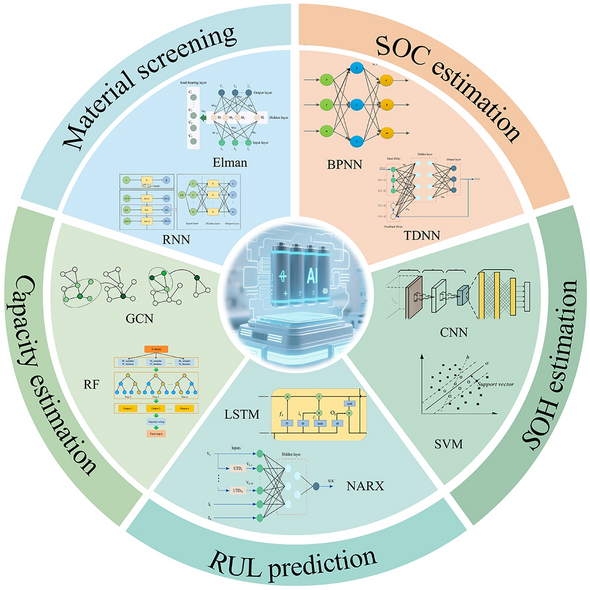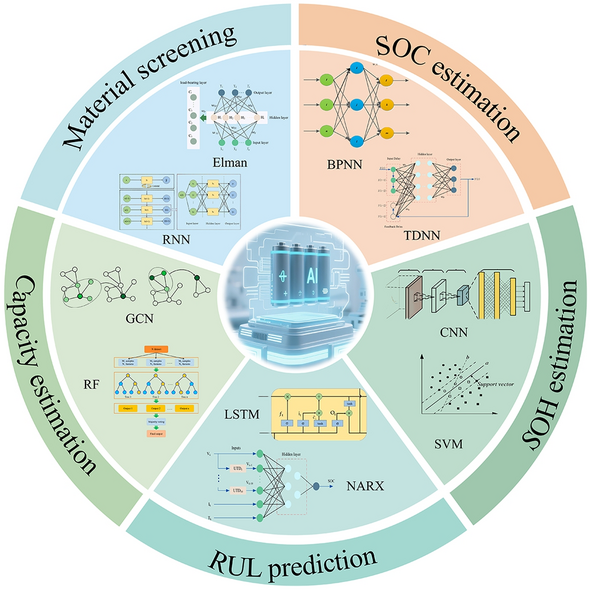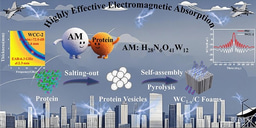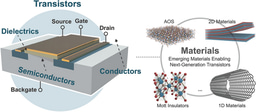Artificial Intelligence Empowers Solid-State Batteries for Material Screening and Performance Evaluation
Published in Chemistry, Materials, and Statistics

Solid-state batteries (SSBs) are hailed as the future of energy storage, promising higher energy density, improved safety, and longer lifespan compared to conventional lithium-ion systems. Yet, their path to commercialization is riddled with challenges—complex material interactions, interface instability, and sluggish ion transport, to name a few. Enter artificial intelligence. In a groundbreaking review published in Nano-Micro Letters, researchers from Soochow University and Nanjing University, led by Professors Sheng Wang and Linwei Yu, unveil how machine learning (ML) is accelerating every stage of solid-state battery development—from atom to application.
Why AI Matters Now
- Accelerated Discovery: ML models can screen thousands of materials in silico, bypassing years of trial-and-error lab work.
- Precision Performance Prediction: From state-of-charge (SOC) to remaining useful life (RUL), AI delivers real-time, high-accuracy forecasts.
- Interface Engineering: AI-driven simulations reveal hidden failure modes at electrode/electrolyte boundaries, guiding targeted mitigations.
Smart Strategies for Smarter Batteries
1. ML-Guided Material Screening
- Cathodes: Crystal graph convolutional networks (CGCNN) have identified 80+ high-voltage, high-capacity candidates from the Materials Project database.
- Anodes: Genetic algorithms coupled with neural network potentials mapped the amorphous Li–Si phase space, uncovering design rules for high-rate silicon anodes.
- Electrolytes: Unsupervised learning discovered 16 novel fast Li-ion conductors, while Bayesian optimization tuned polymer electrolytes for 8.7×10-4 S cm-1.
2. AI for Battery Management Systems
- State-of-Charge (SOC): Hybrid CNN-LSTM models achieve <1% error under dynamic loads.
- State-of-Health (SOH): Attention-augmented networks predict capacity fade with 0.4% RMSE.
- Remaining Useful Life (RUL): Graph convolutional networks forecast cycle life with 3.5% RMSE—critical for warranties and second-life applications.
3. Decoding Ion Transport
- Defect Engineering: ML models link oxygen vacancy concentration in Li-zirconate to 10× faster Li+ diffusion.
- Interface Design: AI-identified dopants (e.g., Sc3+, Ca2+) stabilize Li/garnet interfaces, suppressing dendrites for 500+ cycles.
Future Frontiers
- Generative Design: GANs will invent electrolytes with “impossible” combinations of conductivity, stability, and flexibility.
- Reinforcement Learning: Multi-objective optimization will balance energy density, cost, and recyclability.
- Explainable AI: Physics-informed models will demystify black-box predictions, ensuring trust and adoption.
- Digital Twins: Real-time AI twins will mirror battery behavior from cell to pack, enabling predictive maintenance.
From lab to grid, AI is not just a tool—it’s the catalyst turning solid-state batteries from laboratory curiosities into commercial juggernauts. Stay tuned as Professors Yu, and their teams redefine what’s possible in energy storage.
Follow the Topic
-
Nano-Micro Letters

Nano-Micro Letters is a peer-reviewed, international, interdisciplinary and open-access journal that focus on science, experiments, engineering, technologies and applications of nano- or microscale structure and system in physics, chemistry, biology, material science, and pharmacy.






Please sign in or register for FREE
If you are a registered user on Research Communities by Springer Nature, please sign in